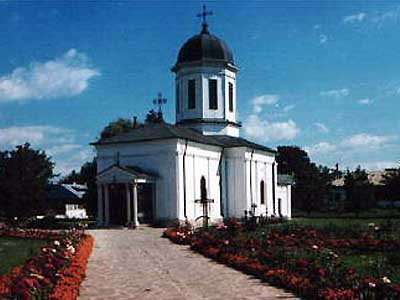Zamfira Monastery


Facts and practical information
Nestled in the serene landscape of Prahova County, Romania, the Zamfira Monastery is a spiritual oasis steeped in history and religious significance. The monastery, which functions as a nunnery, is renowned for its exquisite church, a gem of Orthodox architecture and art.
The origins of the Zamfira Monastery date back to the 18th century, with the church being constructed in 1721 under the guidance of the Wallachian ruler Nicolae Mavrocordat. The monastery stands as a testament to the deep religious fervor and the rich cultural heritage of the region.
The church at Zamfira Monastery is an architectural marvel, adorned with intricate frescoes and ornate iconostasis. The interior of the church is a kaleidoscope of biblical scenes and figures, painted in the Brâncovenesc style, which combines local traditions with Ottoman and Western influences. These paintings not only serve as a form of spiritual edification for worshippers but also attract art enthusiasts and historians from across the globe.
One of the most striking features of the church is its beautifully painted exterior, a rarity among Orthodox monasteries. The frescoes, although weathered by time, still display a vibrant array of colors and depict various saints and martyrs, inviting contemplation and reverence.
The Zamfira Monastery remains an active religious site, with a community of nuns who dedicate their lives to prayer, contemplation, and the upkeep of this sacred place. Visitors to the monastery can experience the tranquility of the cloistered gardens, attend liturgical services, and immerse themselves in the peaceful ambiance that pervades the grounds.
The monastery also serves as a cultural beacon in the region, preserving ancient religious practices and fostering a connection between the past and present. It stands not only as a place of worship but also as a sanctuary for those seeking solace and a deeper understanding of the Orthodox faith.
